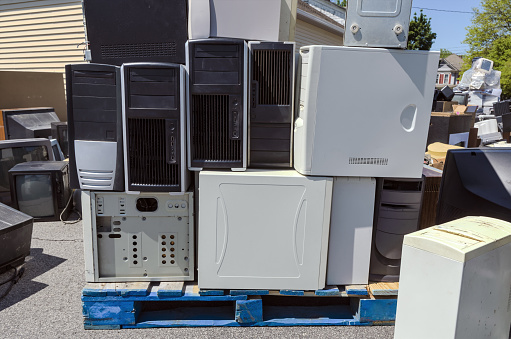End-Of-Life Vs. End-Of-Sale

The end of a product’s lifecycle can mean trouble for companies that haven’t prepared for the inevitable. If your organization uses certain products on a daily basis, you may find it difficult to keep up with the different dates revolving around these products’ unique life cycles. But failing to do so can have negative consequences for your operations if you’re not careful.
Familiarizing yourself with the life cycle of a product can help you make wise decisions about your hardware needs. “End of Life,” “End of Service Life,” and “End of Sale” are just a few terms you may need to know in order to avoid an issue with coverage later down the line. Read on to learn more about some of the similarities and differences between these common product lifecycle terms.
End Of Life Vs. End Of Sale: What Is The Difference?
“End of Life,” or EOL, means that the vendor of a particular product has determined that the product has reached the end of its life or its “useful lifespan.” For products in the EOL stage, the manufacturer will cease to market the product, and in most cases, will stop selling that particular product altogether. Past this date, it may become difficult to access support for the purchased product. In some cases, though, manufacturers may offer extended support, which can ensure you’re covered in increments for a certain period of time.
EOS or “end of sale,” also known as EOA or “end of availability,” is another important term companies dealing with equipment contracts should know. This refers to the date after which a product is no longer available for purchase through its manufacturer. The impact of this can be significant if you haven’t got a game plan. It’s important to be prepared for if and when the product and subsequent support you need for these products, is no longer available. How heavily would something like this affect your everyday operations?
Luckily, there may be a bit of hope, even if a product has been deemed EOS. While not available through its manufacturer, you may still be able to obtain an EOS product from a third-party vendor.
EOSL, known as “End of Service Life” means that a particular manufacturer will cease to provide technical support for a product after a chosen date. Although you might still be able to access some kind of manufacturer support after this time, it will probably cost more.
The 4 Stages Of Product Life Cycles
A product’s life cycle — its birth to its demise — is divided into 4 stages. From the initial introduction stage to the decline stage of the life cycle, understanding this unique sequence will help you further grasp what to expect from your products and what their life cycles may mean for you and your organization.
The introduction stage of a product’s cycle is often the most costly. Launching a new product can entail strong marketing efforts, which can include research and development stages and consumer testing. Things can become even costlier for products in highly competitive industries.
The Growth Stage
The growth stage is an important one for a product, as the company finally begins to see the fruits of its labor. During the growth stage, sales show strong growth, profit margins increase, as does profit. Here, businesses are able to invest more funds into advertising, allowing the product to achieve maximum potential.
Once a product has reached its maturity stage, it’s well established and it’s now the duty of the manufacturer to not only maintain but to further build upon its success. Investing wisely in marketing efforts during this stage is crucial, as it’s often the most competitive time during a product’s cycle, meaning it’s also a good time to evaluate making improvements to the product as a competitive advantage.
The decline stage of a product happens when the market for that particular product begins to diminish. This can happen for a variety of different reasons, perhaps due to market saturation or because consumers are making the switch to a different product entirely. It’s also common that a large percentage of the target audience already have the product or that of a competitor. While this stage of a product’s lifecycle is inevitable, not all hope is lost. It can still remain profitable by implementing cheaper production costs or making the switch to more affordable markets.
Why It’s Important
Performing an IT upgrade can be difficult enough. Add in the worry of expiring service contracts and this can take things to a new level. Your maintenance contracts are highly important in making sure things are flowing smoothly. Finding out your manufacturer no longer offers support for one of your most-used products can bring on new levels of stress. Familiarizing yourself with the different aspects of your product service contracts can ensure you’re never without coverage when you need it most.
Another good solution is simply to look around and see whether there are newer products on the market that would provide you with even better features. Often when products are phased out and reach the end of their life, it’s because newer and better products have been released that will do a much better job.



